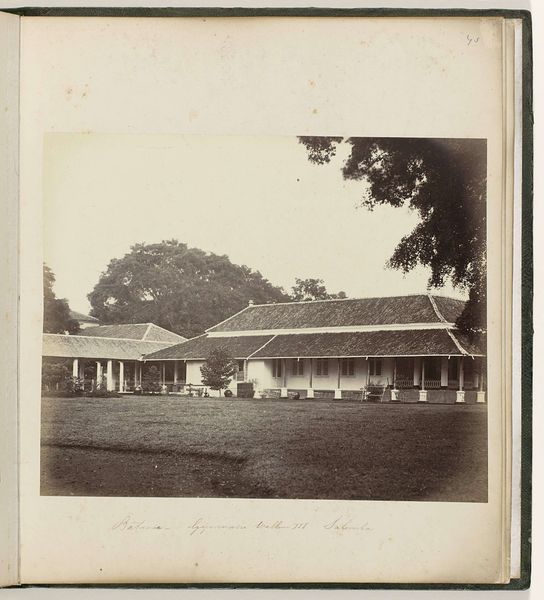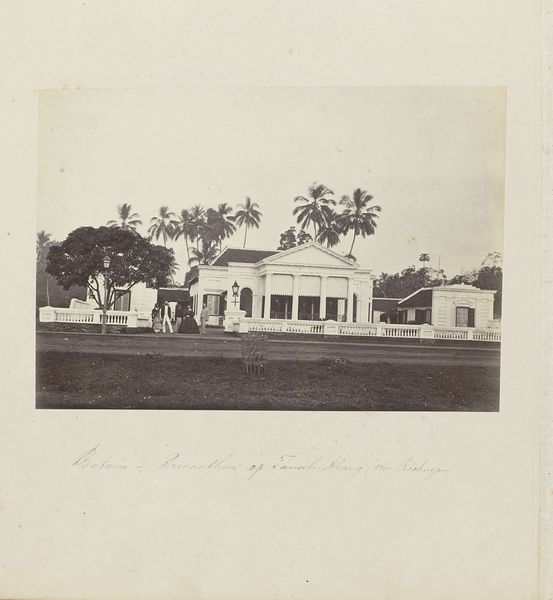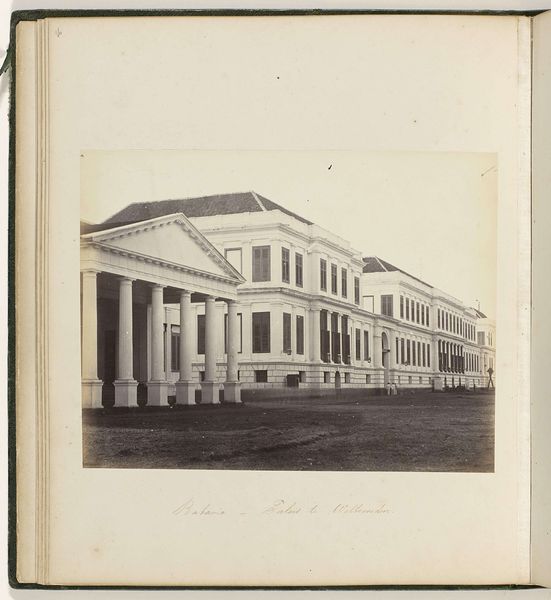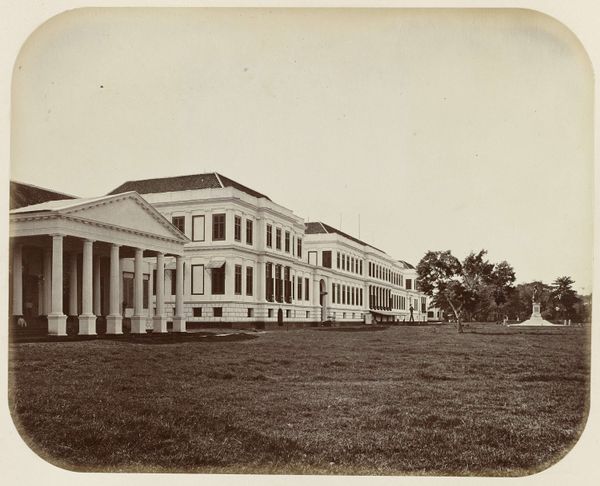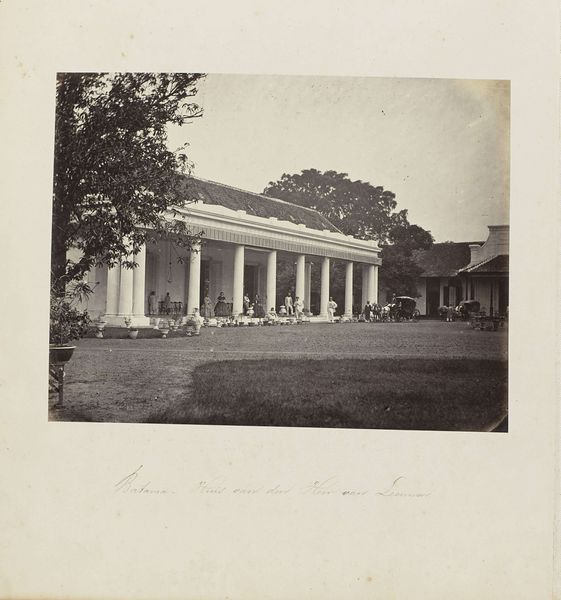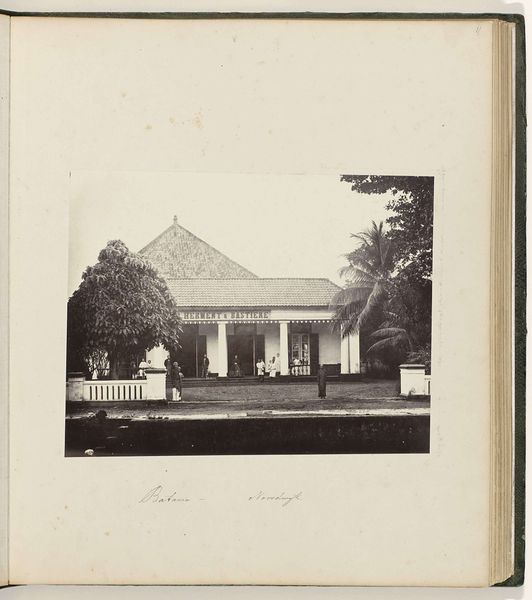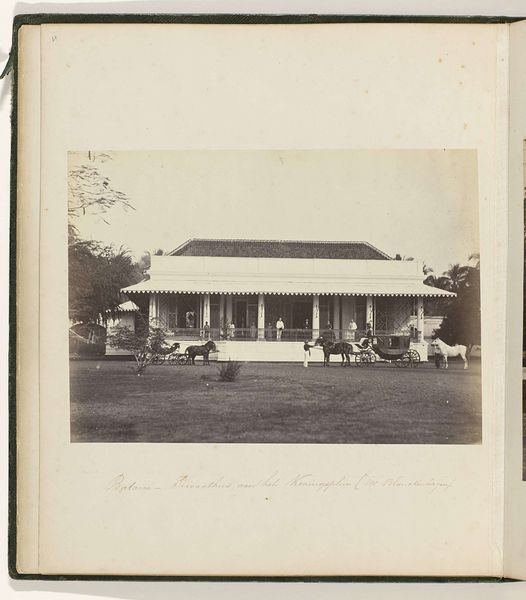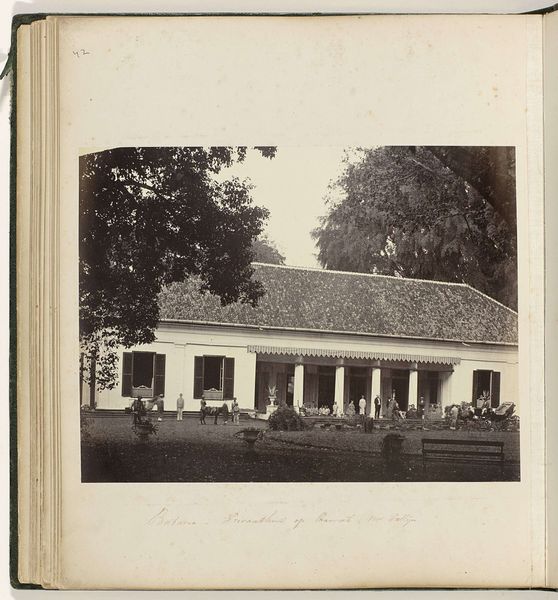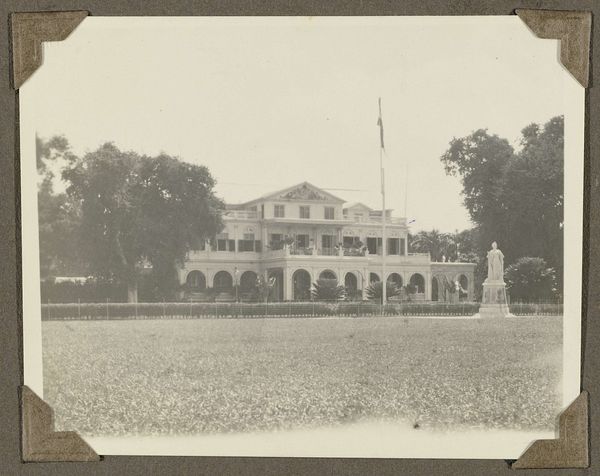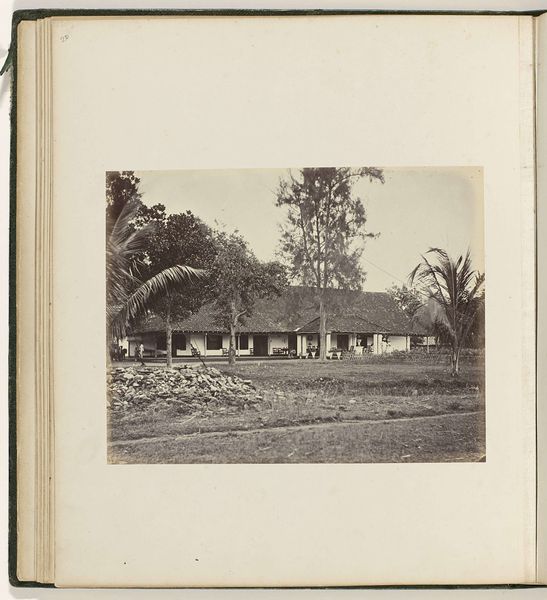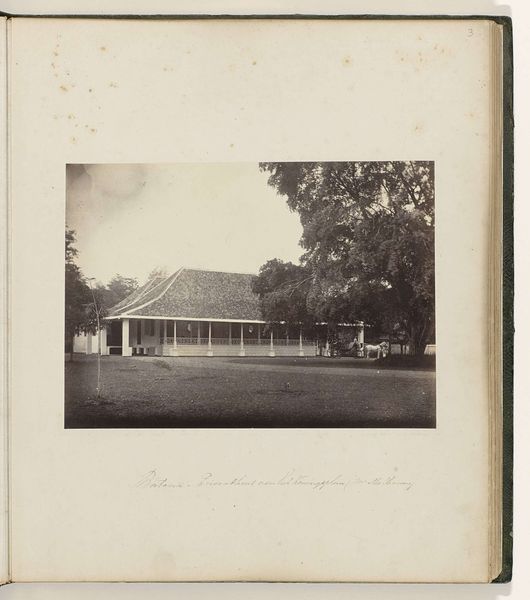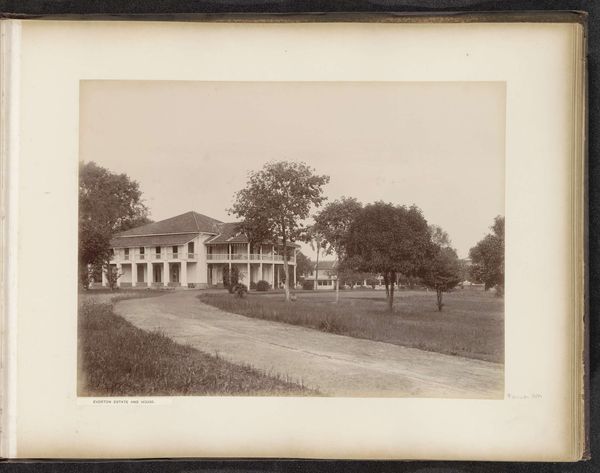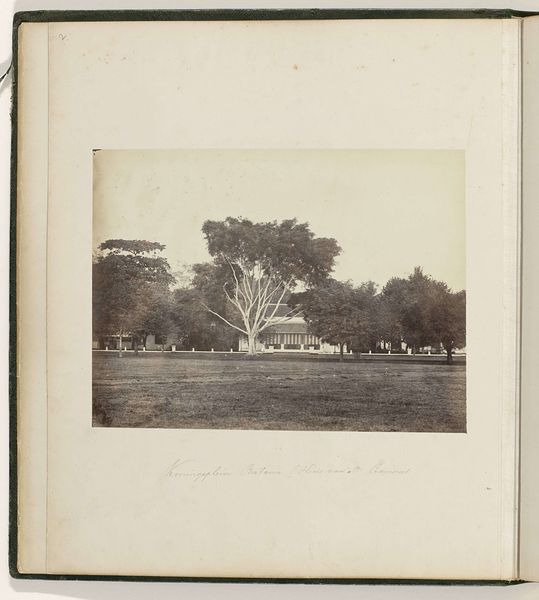
photography, gelatin-silver-print
#
16_19th-century
#
landscape
#
photography
#
orientalism
#
gelatin-silver-print
#
cityscape
#
realism
Dimensions: height 180 mm, width 240 mm
Copyright: Rijks Museum: Open Domain
Editor: Here we have Woodbury & Page’s gelatin-silver print, “Batavia - Societeit,” created sometime between 1863 and 1866. The image feels very still and formal, almost staged. What are your thoughts when you look at it? Curator: Immediately, I see a stark depiction of colonial power dynamics. This isn’t just a building; it's a representation of Dutch influence in Batavia, now Jakarta. The "Societeit," likely a social club, was an exclusive space that reinforced social hierarchies. Editor: So, it’s more than just an architectural study? Curator: Absolutely. Consider the composition. The building dominates the frame, suggesting control, while the indigenous population and culture are conspicuously absent from view. This absence is itself a statement about whose stories are being told, and from whose perspective. What does it suggest to you? Editor: It's unsettling. It highlights the erasure and the imposed European order. Curator: Exactly. Think about who this image was intended for. It probably circulated among the colonizers as a proud representation of their accomplishments, reinforcing their identity and authority while silencing the voices of those who were displaced and oppressed. We have to ask, how does viewing this through a contemporary lens affect our interpretation? Editor: It shifts the focus to the legacy of colonialism and how those power structures continue to resonate today. Thank you. I'm much better positioned to consider my reaction in relationship to a broader context now. Curator: And recognizing that history is the first step in dismantling its ongoing effects. Understanding context is key to interpreting the complex histories embedded in seemingly simple images.
Comments
No comments
Be the first to comment and join the conversation on the ultimate creative platform.
